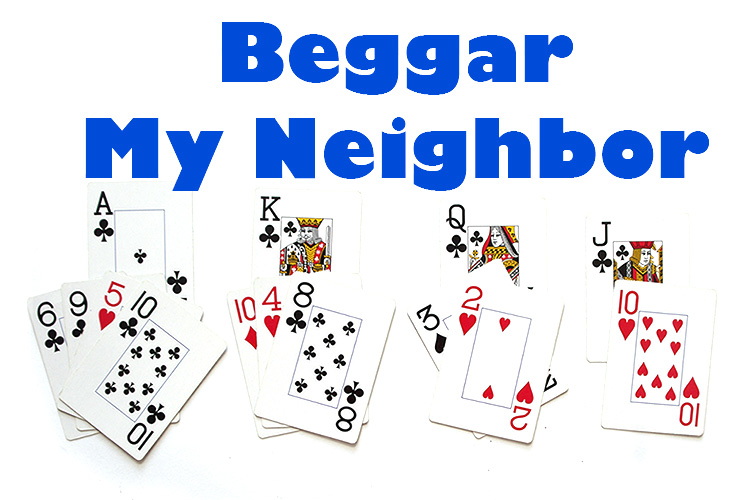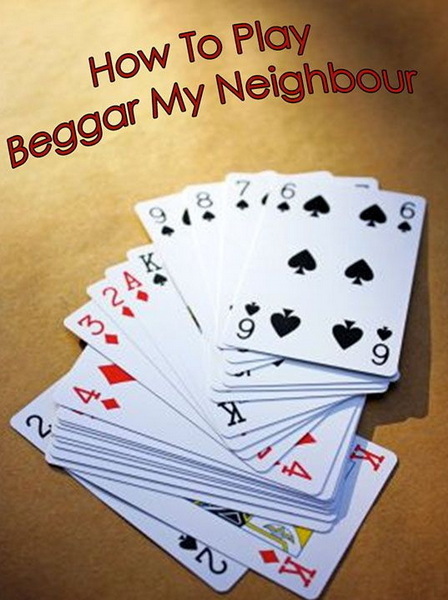Content Menu
● Introduction
● Overview of the Game
>> Objective
>> Number of Players
>> Age Range
● Game Setup
>> Materials Needed
>> Dealing the Cards
● How to Play
>> Starting the Game
>> Court Cards and Payment Rules
>> Winning the Central Pile
>> Continuing Play
● Strategies for Success
● Variations of the Game
● Social Aspects of Playing "Beggar My Neighbour"
>> Building Relationships
>> Encouraging Communication Skills
>> Creating Family Traditions
● Conclusion
● Frequently Asked Questions (FAQs)
>> 1. What is "Beggar My Neighbour"?
>> 2. How many players can participate in "Beggar My Neighbour"?
>> 3. What happens when a player runs out of cards?
>> 4. Are there any strategies for winning?
>> 5. Can I modify the rules for more fun?
● Citations:
Introduction
"Beggar My Neighbour," also known as "Strip Jack Naked" or "Beat Your Neighbour," is a classic card game that has entertained players for generations. Its origins can be traced back to Great Britain, with references appearing in literature as early as the 19th century. This game is simple yet engaging, making it a favorite among children and adults alike. In this comprehensive guide, we will explore the rules, strategies, and variations of "Beggar My Neighbour," ensuring you have all the knowledge needed to play and enjoy this delightful card game.

Overview of the Game
Objective
The primary objective of "Beggar My Neighbour" is to be the first player to collect all the cards from the deck. Players achieve this by winning rounds and accumulating cards from a central pile.
Number of Players
The game can accommodate 2 to 6 players. For larger groups, two decks of cards may be required to ensure everyone has enough cards to play.
Age Range
This game is suitable for players aged 6 and above, making it an excellent choice for family gatherings and casual get-togethers.
Game Setup
Materials Needed
- A standard deck of 52 playing cards.
- A flat surface for gameplay.
Dealing the Cards
1. Shuffle the deck thoroughly.
2. Deal all the cards face down to each player in a clockwise manner until there are no cards left.
3. Players should keep their cards in a face-down pile without looking at them.

How to Play
Starting the Game
1. The player to the left of the dealer begins by flipping over their top card and placing it face up in the center of the table.
2. Play continues clockwise, with each player adding one card to the central pile until a court card (Ace, King, Queen, or Jack) is played.
Court Cards and Payment Rules
When a court card is played, specific rules apply regarding payment:
- Ace: The next player must turn over four cards.
- King: The next player must turn over three cards.
- Queen: The next player must turn over two cards.
- Jack: The next player must turn over one card.
These payment cards are placed on top of the central pile.
Winning the Central Pile
1. If all turned cards during a payment are number cards (2-10), the player who played the court card collects the entire central pile and places it at the bottom of their own stack.
2. If any court card appears during payment, that payment stops immediately, and the next player must pay according to the new court card revealed.
Continuing Play
- The player who wins the central pile starts the next round by flipping their top card into the center.
- The game continues until one player runs out of cards, at which point they are eliminated from play.
Strategies for Success
While "Beggar My Neighbour" relies heavily on luck, certain strategies can enhance your chances of winning:
1. Card Management: Keep track of which cards have been played to anticipate your opponent's moves. This can help you make informed decisions about when to play your court cards.
2. Timing Your Court Cards: Save your high-value court cards for pivotal moments when they can force your opponent into difficult situations. For example, playing an Ace when your opponent has few cards left can significantly increase your chances of winning.
3. Observe Opponents: Pay attention to your opponents' reactions and card plays; this can give you clues about their remaining cards. If a player seems hesitant or excited about a particular play, it may indicate they have strong or weak cards in hand.
4. Bluffing Techniques: While not formally part of the rules, some players enjoy incorporating bluffing into their strategy. By acting confidently when playing lower-value cards or feigning distress over losing a round, you may influence how others perceive your hand.
5. Endgame Strategy: As players are eliminated and fewer players remain, adjust your strategy accordingly. With fewer opponents, you may want to take more risks with your court cards since there are fewer chances for penalties.
Variations of the Game
"Beggar My Neighbour" has numerous variations that can add excitement or complexity:
1. Multiple Decks: For larger groups, use two decks shuffled together. This increases the number of available cards and adds an element of unpredictability.
2. Different Payment Rules: Customize how many cards must be paid based on different court cards. For example, you might decide that Kings require four cards instead of three or that Jacks require two instead of one.
3. Time Limit Play: Set a timer; when time runs out, players count their remaining cards, and the one with the least wins. This variation can add urgency and excitement to each round.
4. Team Play: In larger groups, consider forming teams where players work together against opposing teams. This variation encourages cooperation and strategy development among team members.
5. Special Cards: Introduce special rules for certain number cards (e.g., 10s could allow a player to skip their turn). This adds layers of strategy as players navigate both standard rules and unique twists.
Social Aspects of Playing "Beggar My Neighbour"
Playing "Beggar My Neighbour" is not just about winning; it's also about social interaction and building connections with fellow players:
Building Relationships
Engaging in friendly competition fosters camaraderie among players. Sharing laughs over unexpected outcomes or playful banter during rounds can strengthen relationships and create lasting memories.
Encouraging Communication Skills
The game encourages communication as players discuss strategies or react to each other's plays. This interaction can help develop social skills in younger players while providing entertainment for all ages.
Creating Family Traditions
Many families enjoy playing card games together as part of their traditions during holidays or gatherings. Incorporating "Beggar My Neighbour" into these events can create cherished memories that last for generations.
Conclusion
"Beggar My Neighbour" is a timeless card game that combines luck and strategy in an entertaining package. Its simple rules make it accessible for players of all ages, while variations allow for endless replayability. Whether you're playing with family or friends, this game promises hours of fun and engagement.

Frequently Asked Questions (FAQs)
1. What is "Beggar My Neighbour"?
"Beggar My Neighbour" is a classic card game where players aim to collect all cards from their opponents by playing court cards that require penalties from other players.
2. How many players can participate in "Beggar My Neighbour"?
The game can be played with 2 to 6 players, but more than three players typically require two decks of cards.
3. What happens when a player runs out of cards?
When a player runs out of cards, they are eliminated from the game, and play continues among remaining players until one wins all the cards.
4. Are there any strategies for winning?
Yes! Effective strategies include managing your high-value court cards wisely, keeping track of played cards, and observing opponents' behaviors during play.
5. Can I modify the rules for more fun?
Absolutely! You can introduce variations such as different payment rules or set time limits for added excitement.
Citations:
[1] https://stpetersschool.ie/wp-content/uploads/2020/06/Card-Games.pdf
[2] https://en.wikisource.org/wiki/1911_Encyclop%C3%A6dia_Britannica/Beggar-my-neighbour
[3] https://math.stackexchange.com/questions/2688331/beggar-my-neighbour-possible-games/2688359
[4] https://www.youtube.com/watch?v=A9zYqvS39AY
[5] https://en.wikipedia.org/wiki/Beggar-my-neighbour
[6] https://tradediversion.net/2009/02/17/the-origins-of-beggar-thy-neighbour/
[7] https://www.pagat.com/war/beggar_my_neighbour.html
[8] https://github.com/yibie/yibie.github.io/blob/master/index.xml
[9] https://www.thesprucecrafts.com/beggar-my-neighbor-card-game-rules-411130
[10] https://www.richardpmann.com/beggar-my-neighbour-records.html
[11] https://www.denexa.com/blog/beggar-my-neighbor/
[12] https://www.officialgamerules.org/card-games/beggar-my-neighbor
[13] https://www.dummies.com/article/home-auto-hobbies/games/card-games/general-card-games/playing-beggar-my-neighbor-199747/
































